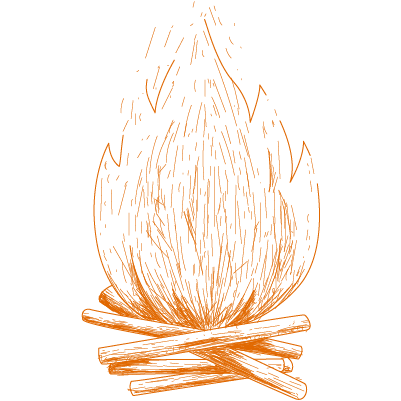Course
NATIVE WISDOM
£120



Reconnecting to Our Innate Emotional Compass
In today’s fast-paced, substance-reliant Western culture, many of us have become disconnected from our natural emotional wisdom. We often numb our feelings with distractions and substances, distancing ourselves from the intrinsic knowledge our bodies hold. It’s time to rediscover this Native Wisdom—the profound, indigenous understanding of our own emotional landscapes.
Native Wisdom is a transformative course designed to help you reconnect with your feelings, using them as a compass to meet your true needs. By re-engaging with your emotions, you can harness the deep-seated wisdom within, guiding you towards a more authentic and fulfilling life.
What You’ll Learn
In the Native Wisdom course, you will explore a variety of practices and theories aimed at reconnecting you with your innate emotional intelligence:

SOMATIC PRACTICES
Engage in body-focused exercises that help you become more aware of your physical sensations and emotions.
Mindfulness
Learn techniques to stay present and fully experience your feelings without judgment.
Polyvagal Theory
Understand how the vagus nerve influences your emotional and physiological responses, and learn methods to regulate your nervous system.
Nervous System Regulation
Develop skills to calm your nervous system, enhancing your ability to respond to stress and emotional challenges with resilience.
Integrating Emotional Wisdom:
Combining all practices to create a personalised emotional regulation toolkit so you can maintain and deepen your connection to your emotional compass.
Who should enroll?
Native Wisdom is ideal for anyone seeking to:
- Reconnect with their emotions and use them as a guide for their needs.
- Overcome reliance on substances or distractions to manage feelings.
- Develop a deeper understanding of their body’s inherent wisdom.
- Enhance their emotional resilience and overall well-being.
Holistic Approach
Integrating body, mind, and spirit to foster a complete emotional connection.
Expert Guidance
Learn from experienced practitioners in somatic practices, mindfulness, and nervous system regulation.
Practical Tools
Gain actionable techniques to apply in your daily life, promoting lasting emotional health.
FAQ
Here are some common questions we receive about embodie, somatic work. If there is something that is not covered here, feel free to reach out to us via the Contact page.
What should I wear?
Wear comfortable clothes that are lose fitting that you are comfortable moving in. You can be barefoot or wear shoes that do not constrict movement too much. Ensure too to stay hydrated throughout, so bring a bottle of water.
Do you offer 1-1?
Yes. This is a group class so we will be conducting the session in community. It is recommended to start there and if you wish to have a follow-up session tailored to you, you can of course do that following the course and instructions for doing so will be provided.
What does 'somatic' mean?
From the Greek word ‘soma’, meaning ‘body’, a somatic practice involves tuning in to the inner world of the body, understanding body signals and messages, and becoming aware of the internal experience. Somatic practice also involves bringing conscious awareness to one’s behaviour, image, and narratives we assign to things, as well as the external sensory experience.
What happens during a session?
Somatic Sessions include Somatic Experiencing®, coaching, gentle movement, and touch work. Somatic therapy can support the renegotiation of past traumatic events and can facilitate the processing of fight, flight and freeze response patterns that remain in the body’s physiology after stressful or traumatic experiences. Completing these survival patterns can bring a greater capacity for self-regulation and an increased sense of social engagement, well-being, and integration.
What is Somatic Experiencing®?
Somatic Experiencing® (SE) is a naturalistic approach used to enhance regulation in the nervous system and support the resolution of trauma developed by Dr. Peter Levine. The word trauma in this sense covers a wide range of physical and psychological symptoms that result from the effect of acute and/or accumulated stress on human physiology.
SE is partially based upon the observation that wild prey animals, though routinely threatened, are rarely traumatized. Animals in the wild utilize innate mechanisms to regulate and discharge the high levels of energy associated with self-protective survival behaviors. These mechanisms provide animals with built-in resilience that enables them to return to healthy functioning in the aftermath of highly charged, distressing, or life-threatening experiences.
These built-in responses are often inhibited in humans by other humans, social and cultural conditioning, and/or our inability to find safe enough conditions that we can fully move through them. SE supports individuals in completing fight, flight, and freeze response patterns that remain in the physiology after stressful or traumatic experiences or conditions.
The completion of these survival patterns can bring a greater capacity for self-regulation, as well as an increased sense of social engagement, well-being, and integration. Even though SE primarily targets issues of trauma, it is also seen as an effective way of supporting individuals interested in expanding their ability to authentically be in the world. People often report feelings of greater ease physically, psychologically, relationally, and spiritually.
-
SE employs awareness of the body and the body’s “voice” to help people “renegotiate” rather than relive or re-enact traumatic experiences in their efforts to heal.
-
SE approaches allow highly charged survival energies to be safely experienced and gradually discharged.
-
SE “titrates” experience (breaks down into small, incremental steps), rather than evoking catharsis – which can overwhelm the regulatory mechanisms of the organism.
-
SE may employ (with the client’s consent) coregulatory touch work (not massage) in support of the renegotiation process.
Will it be too much for me?
During sessions, we slow down the client’s experience, allowing the body to process events in the present moment. We mindfully track the nervous system, including body sensations, images, emotions, thoughts, and movement, and we make sure to stay within the client’s window of tolerance to build capacity over time.

